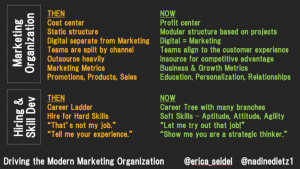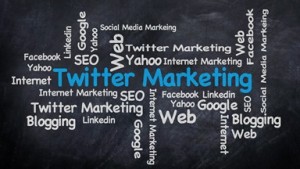Since 2014, small and medium-sized business owners have experienced year-over-year improvement of business results, and they’re increasingly optimistic about what the future holds. According to a recent survey, 56 percent of local business owners plan to increase their marketing budgets in 2016, with a big focus on digital marketing. Marketing channels that will see the biggest investment include email, social media, display, mobile and search (SEO/PPC).
In short, marketing will continue to be front and center for small business owners, who are considering what they can do to increase their momentum, and we’ll see a focus on three core areas as a result.
- Social media.
The majority of small business owners now have some kind of social media presence, whether on Facebook, Twitter or other emerging platforms. They’ll become more mature in their use of these platforms. We often see business owners who think it’s a form of marketing to simply post updates about their businesses, regardless of who’s paying attention or interacting with the message being delivered. But this isn’t marketing, and is essentially like talking to an empty room. While the number of “Likes” or “Followers” of a business are important, small business owners need to be engaged in constant conversation with their customers, responding to inquiries, soliciting feedback and creating the perception that the business is accessible and interested.
Small business owners also need to be thinking about what they can do to connect beyond their core “friends and family” network. Facebook, Twitter and other platforms also offer paid media opportunities to serve targeted ads to potential customers in addition to simply engaging their existing followers. By determining the characteristics of their core customers, businesses can create look-alike models to execute pay-to-play campaigns that can actually drive new business leads, going beyond just “likes” and shares.
Lastly, with regards to social media, it’s said you can’t buy what you can’t measure. Small business owners must educate themselves on the rudiments of social media measurement to get a basic grasp of whether awareness, likes and site visits correlate with business goals, especially sales.
- CRM.
Digital channels such as email, social media, SMS (texts) and POS (point-of-sale) are all conduits for ad retargeting and nurturing your customer relationships. Each time a potential or return customer encounters your brand, incremental data is collected, which small business owners can analyze to make future exposure more meaningful. Little by little, as customers engage with your brand, a long-term relationship develops.
We’ll see small business owners move toward adopting more robust CRM systems that allow them to go beyond simple email distribution lists and connect all their digital channels. For example, a local boutique proprietor of clothing with several stores around the region can use a combination of digital and physical communications to manage local customer relationships. They may provide an in-store “guest book” for customers to sign and provide basic information such as email, snail-mail address and birthday. Using that information, the business can start a friendly but unobtrusive correspondence via email with special offers to loyal V.I.P. customers and complement those communications with text reminders about weekend in-store sales or a hand-written birthday card mailed to homes. The store can also remind customers of those sales via social ads, and drive conversation to their Facebook page for additional interaction or promotion of specific pieces clothing to generate more excitement.
Customer relationship management will come front and center, moving from the enterprise down towards the small businesses that form the base of our economy.
- High touch is in, self-service is out.
Website, SEO, SEM, Facebook, text, email, Pinterest, Instagram. In 2015, small business owners were overwhelmed with marketing options, all designed to allow them to quickly get online and reach new customers. Spurred on by the introduction of Google AdWords, “DIY” became the approach most marketing vendors pushed – thinking it was the easiest strategy for both the business owner and the vendor.
Now, however, we’re starting to see a robust segment of small and medium business proprietors who adopt a “DIFM” – Do It For Me – or “DIWM”—Do it With Me – attitude. Service expectations are rising while businesses are fatigued by trying to figure it all out on their own. They want to understand what’s working and what’s not, and they want help in doing so.
Businesses that cater to small businesses by way of consultative, high-touch services will proliferate and prosper, much in line with the maturing of social media use and greater adoption of robust CRM systems.
Going forward, marketing technology will continue to reshape how small and medium businesses approach the customer experience and allow them to move beyond presenting themselves as a “mom and pop” shop and more towards a sophisticated offering of their goods and services.
Digital & Social Articles on Business 2 Community(13)






